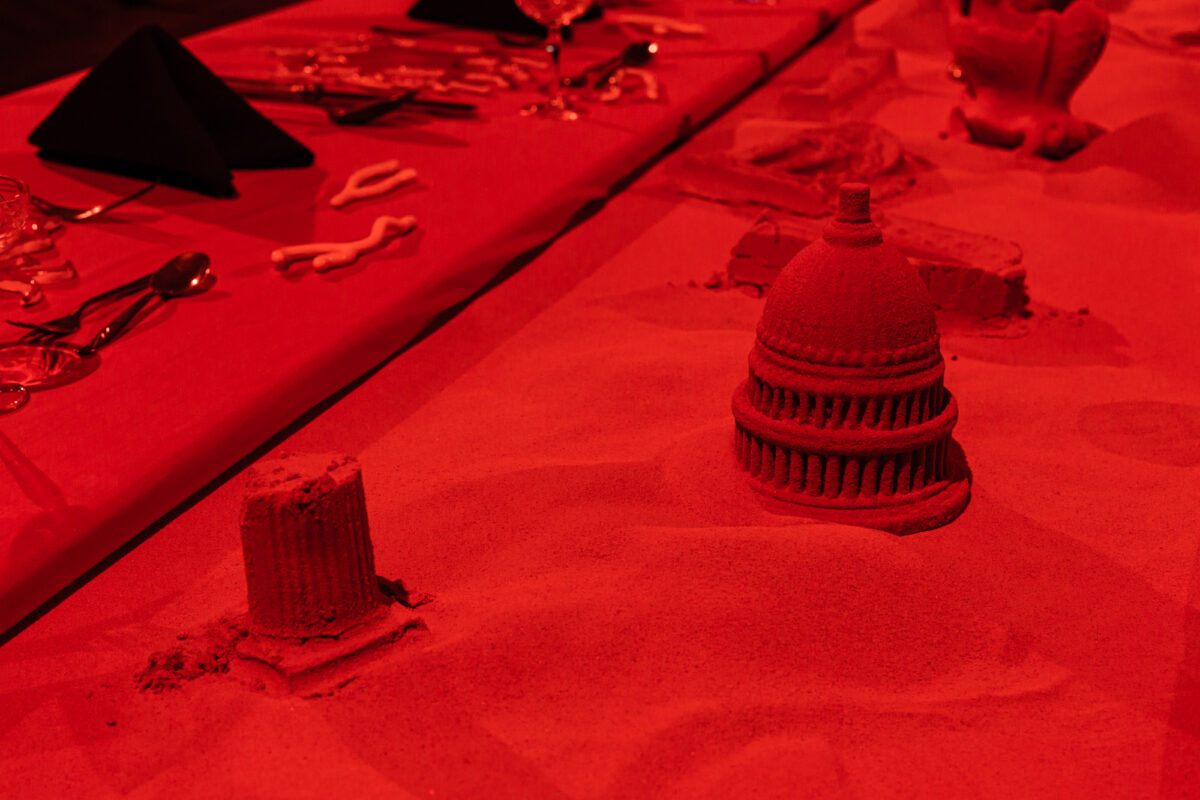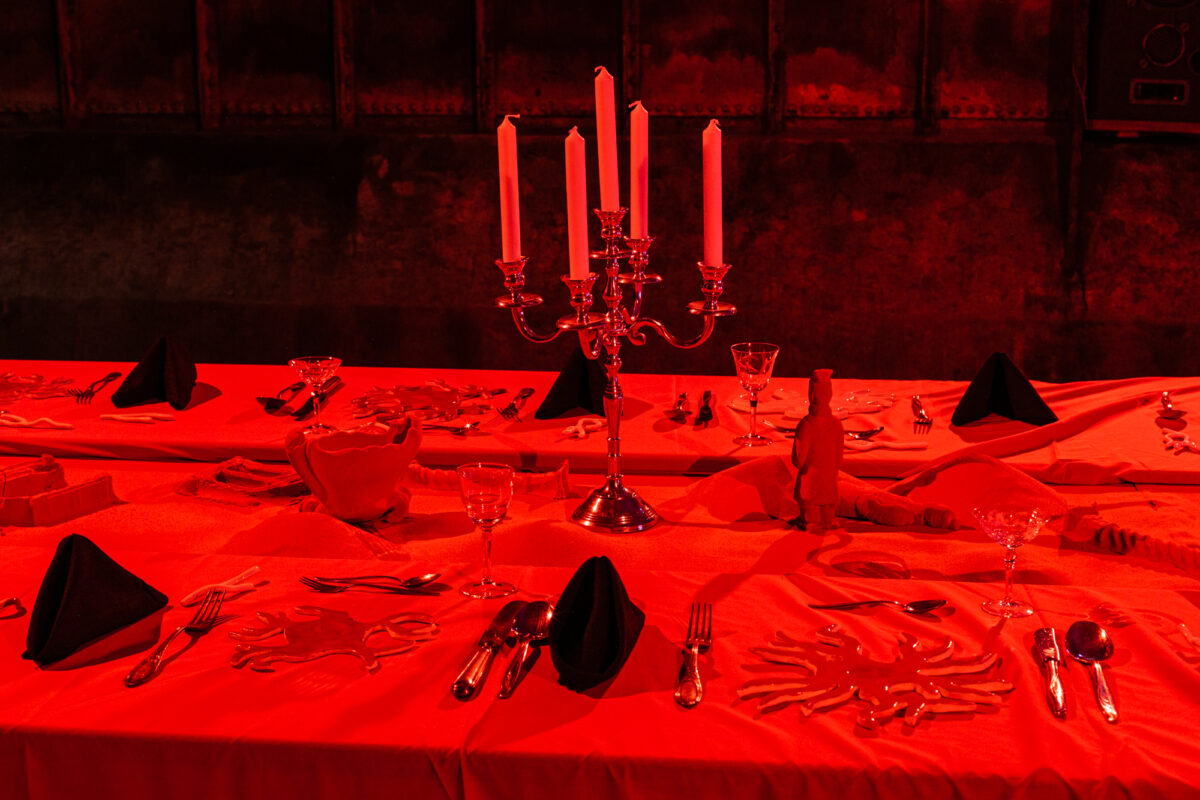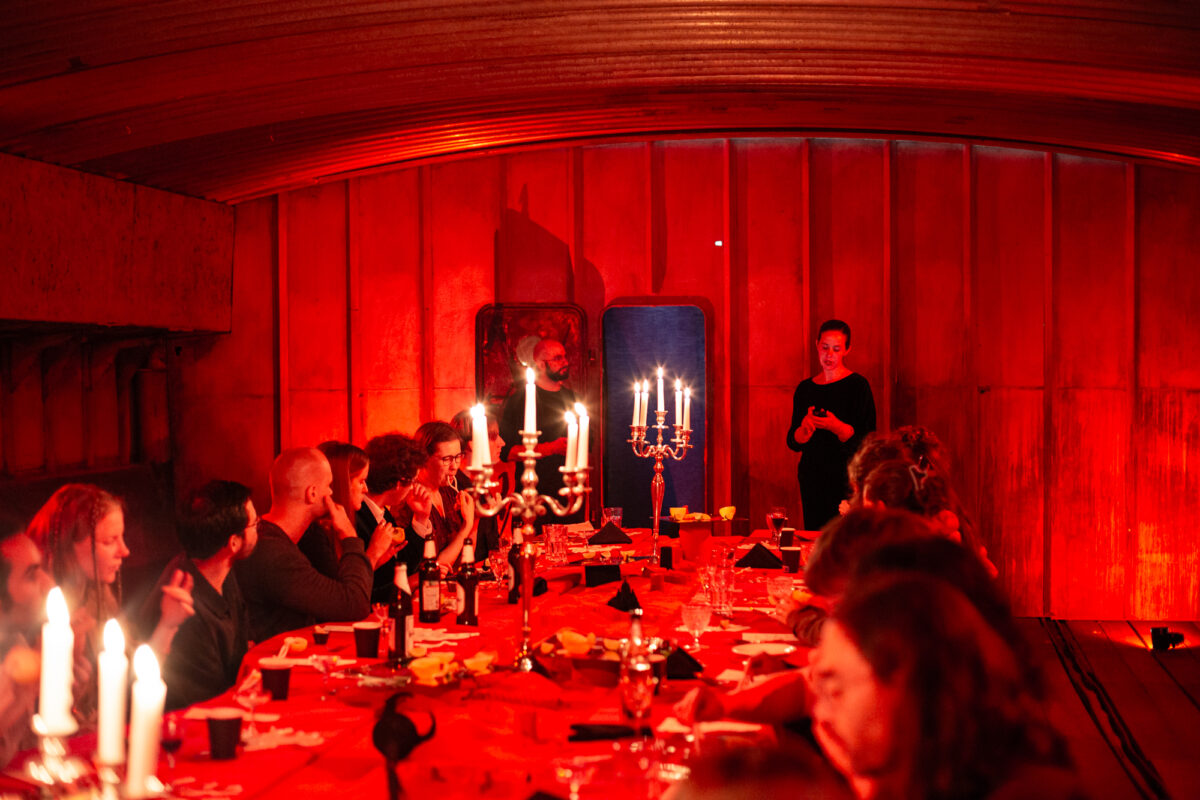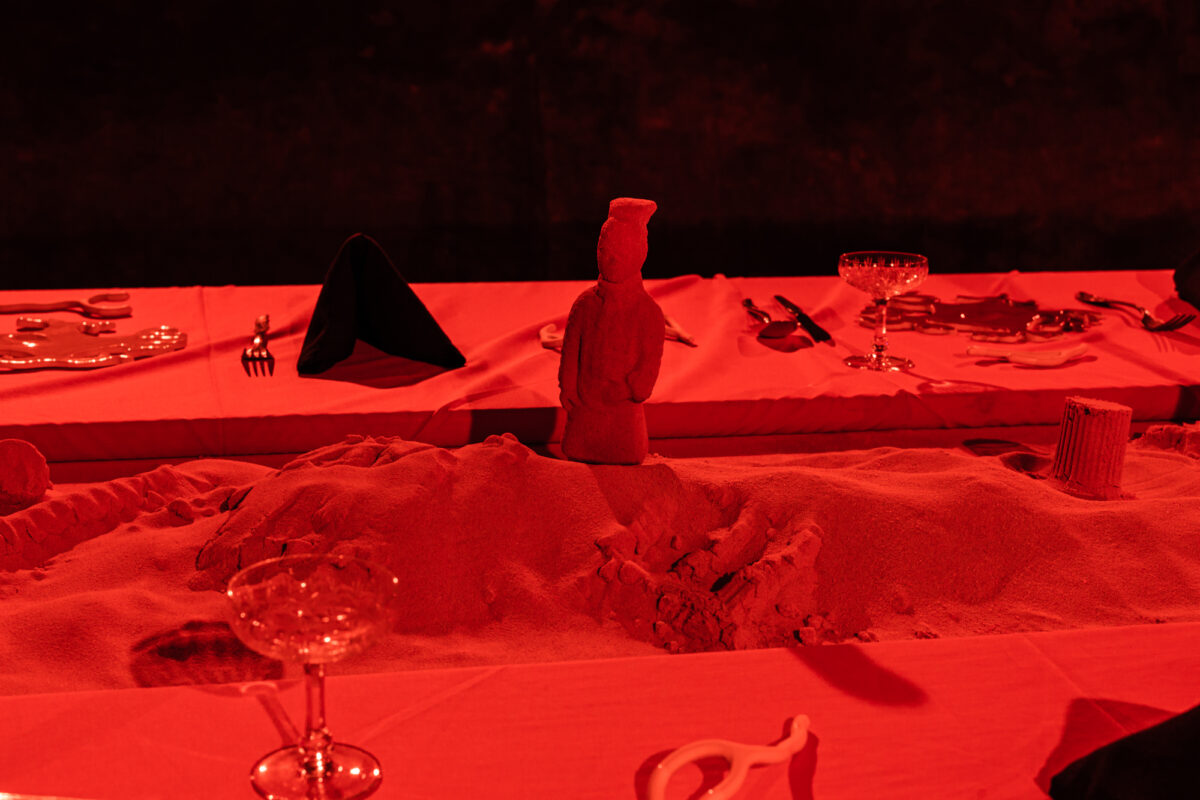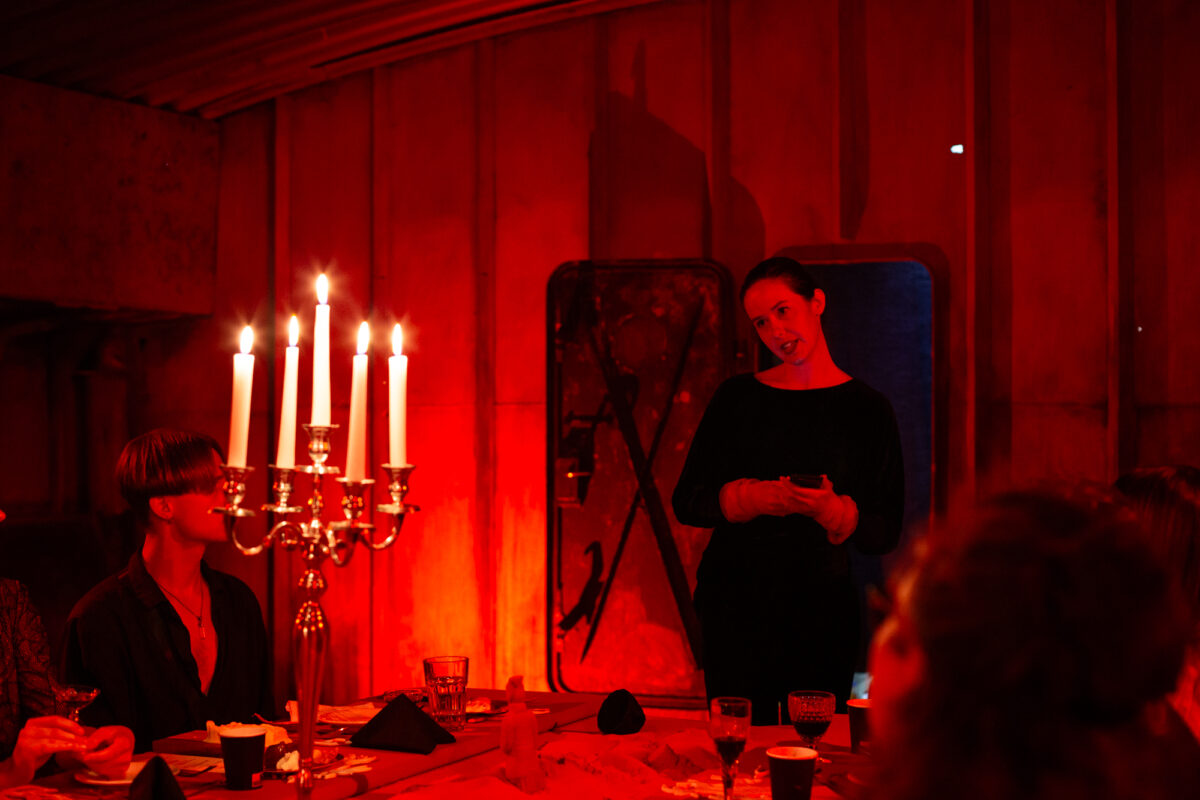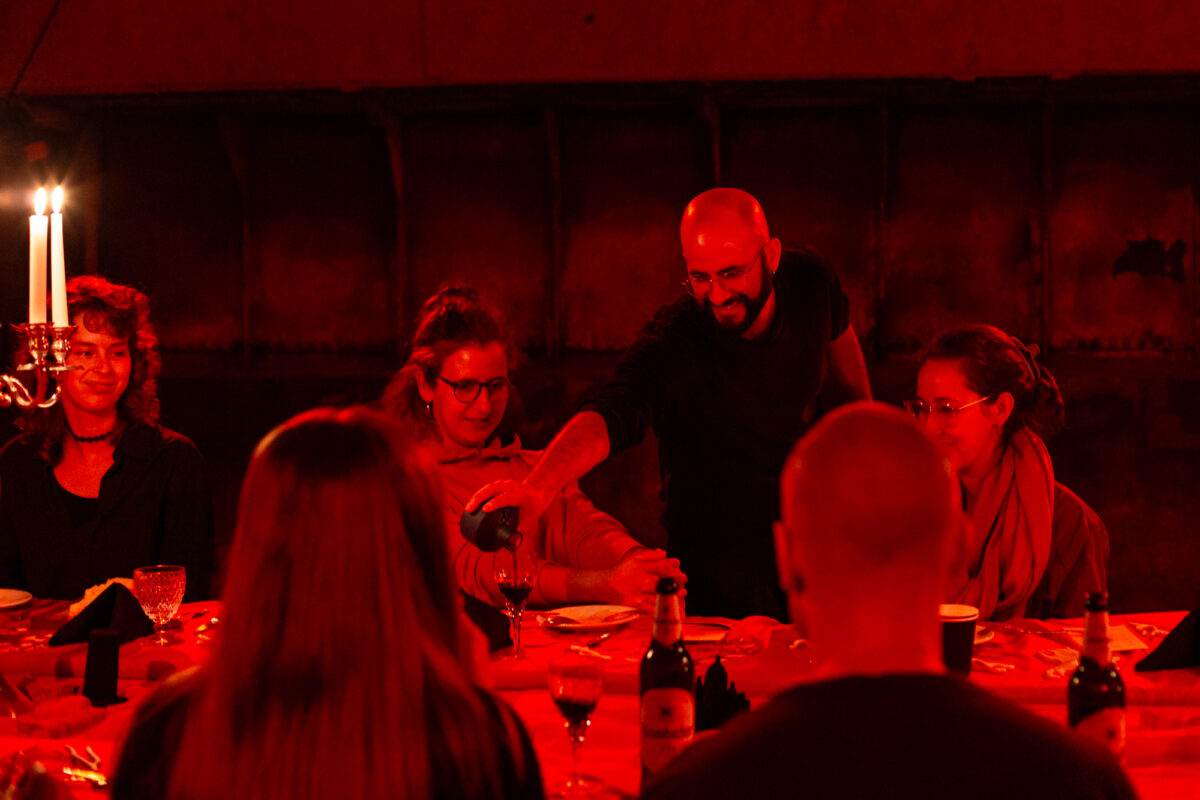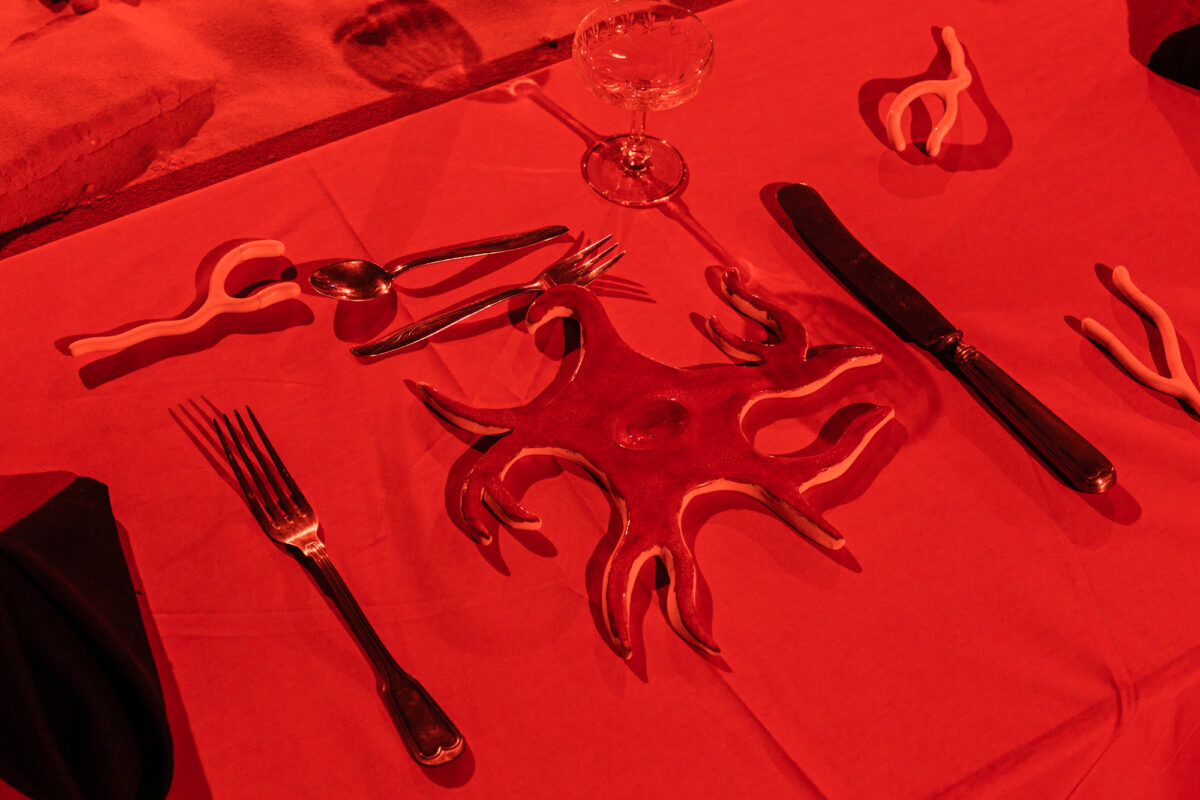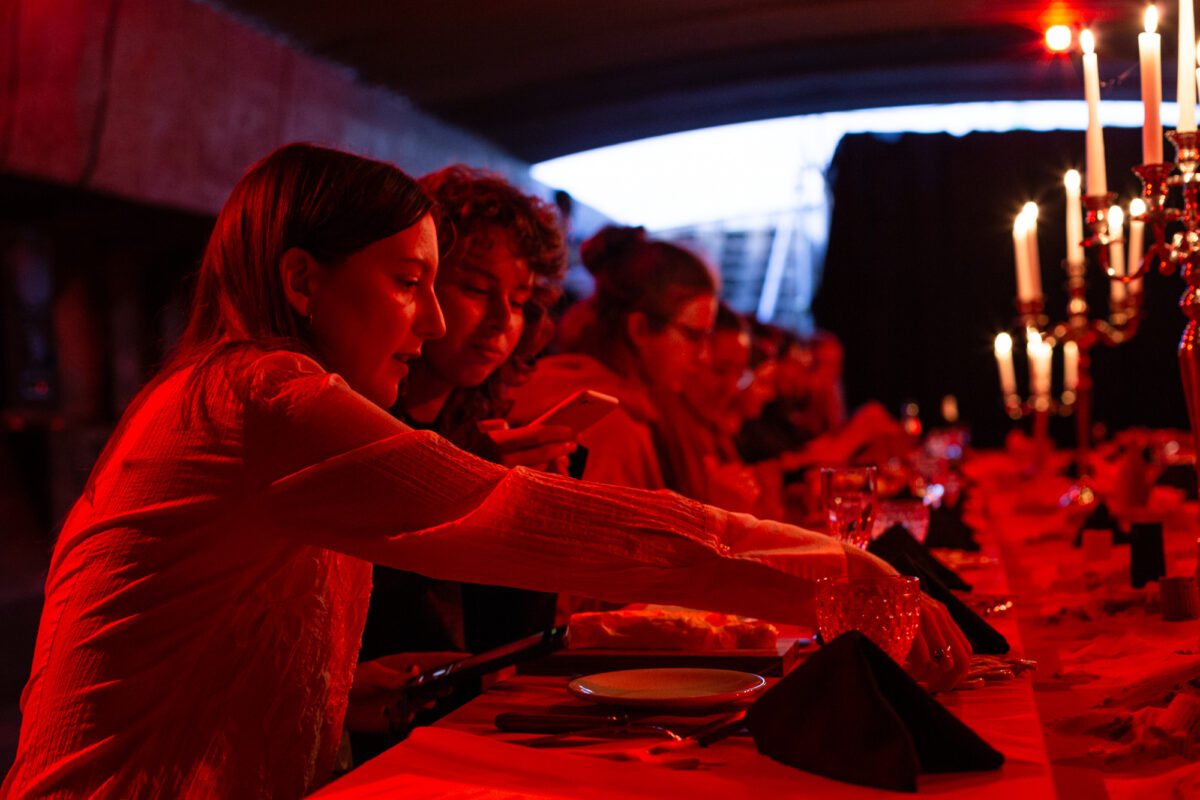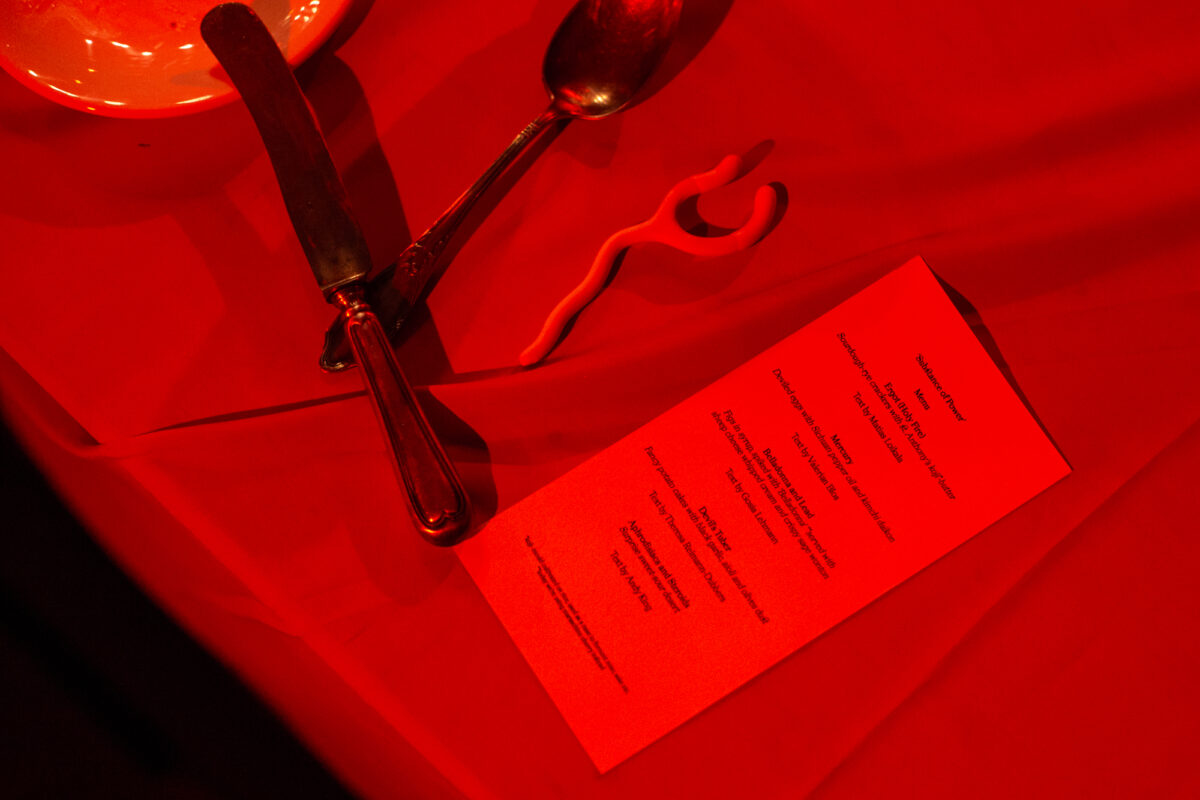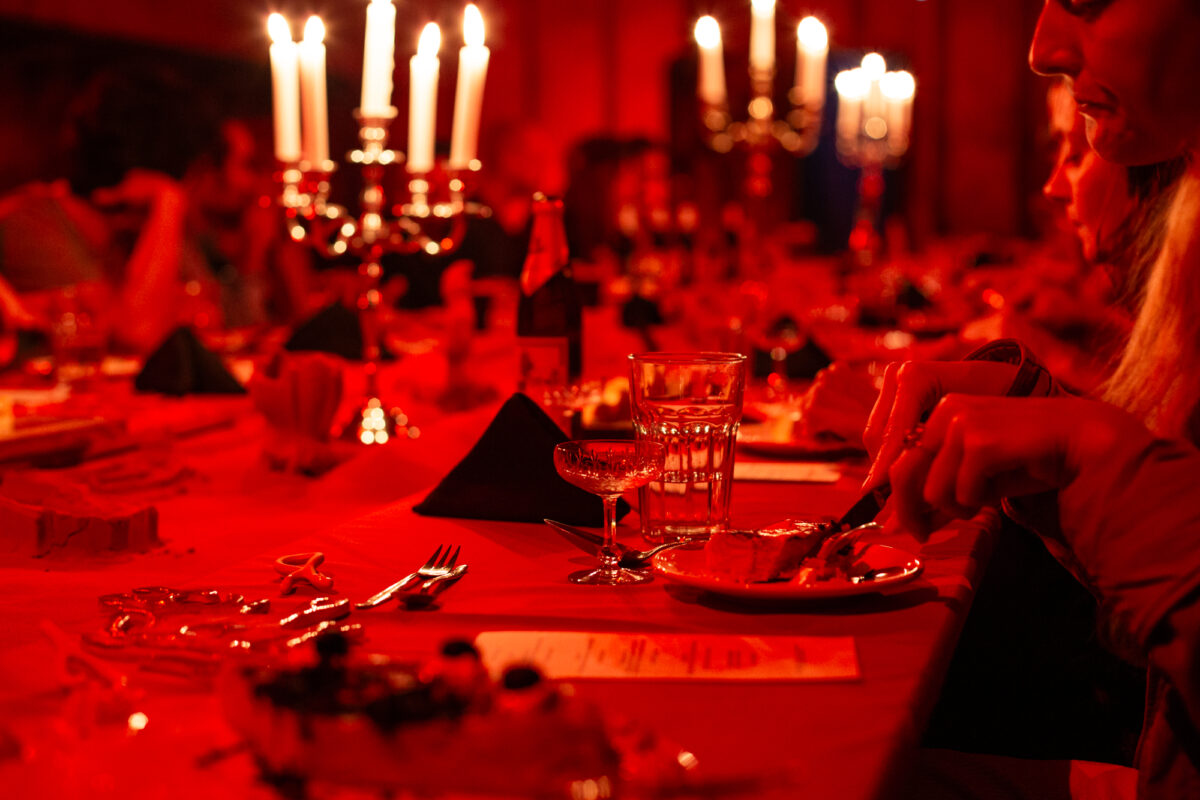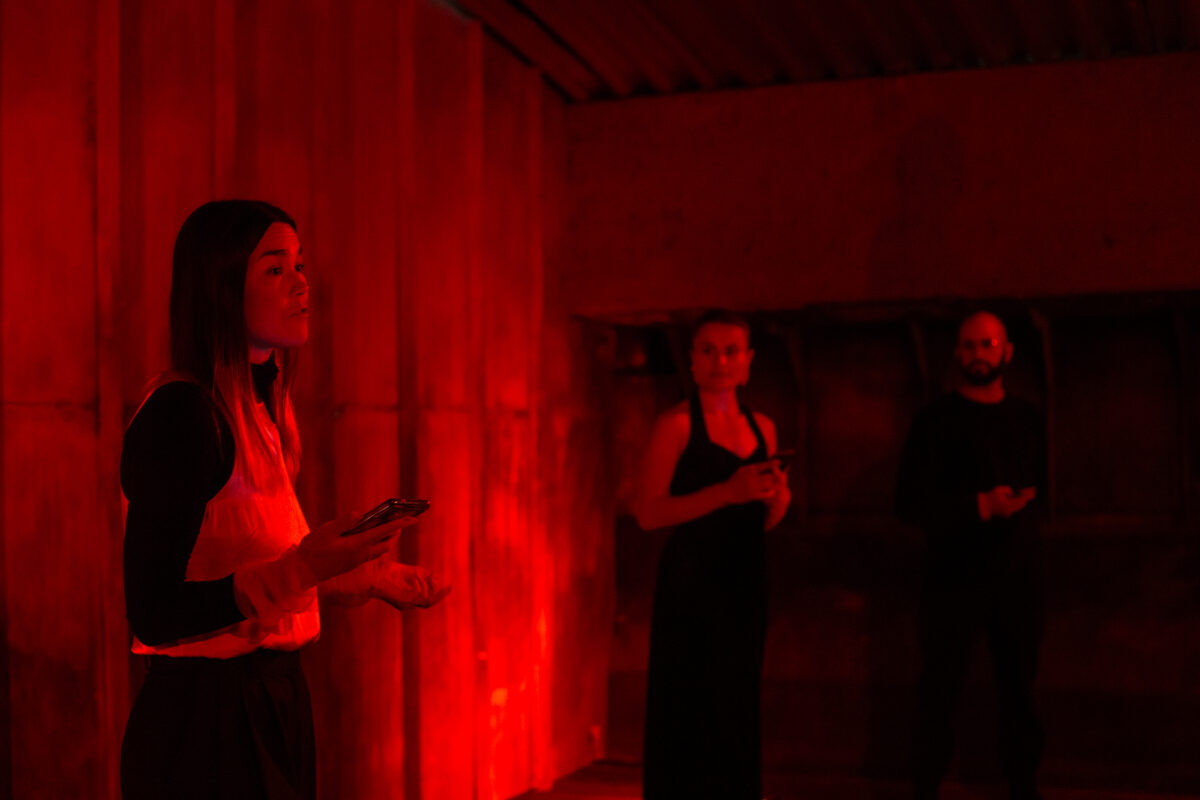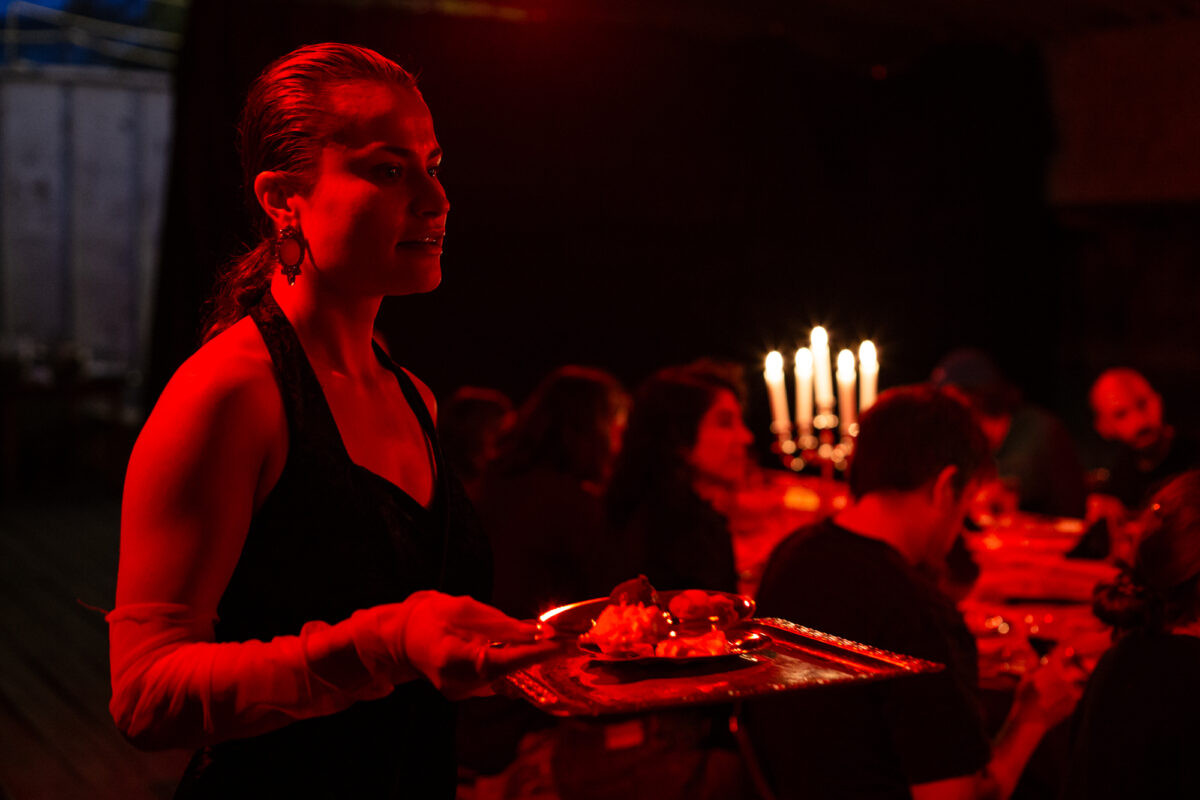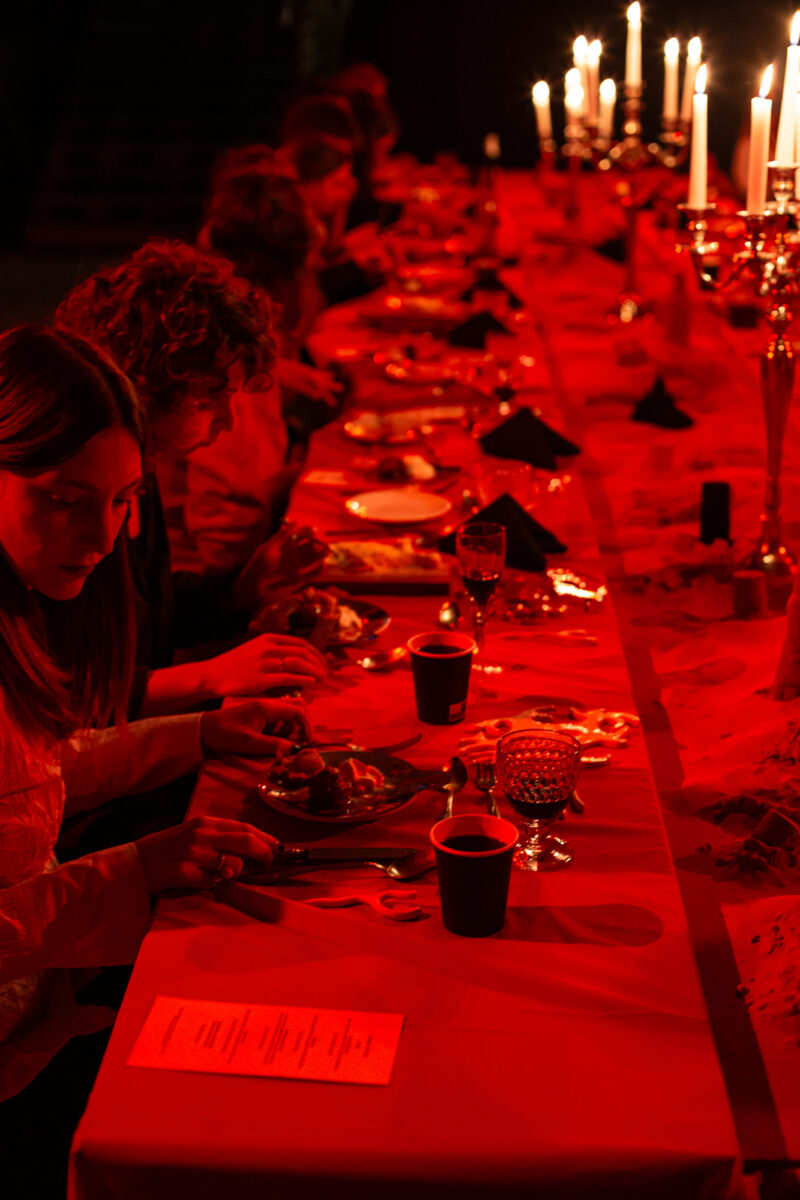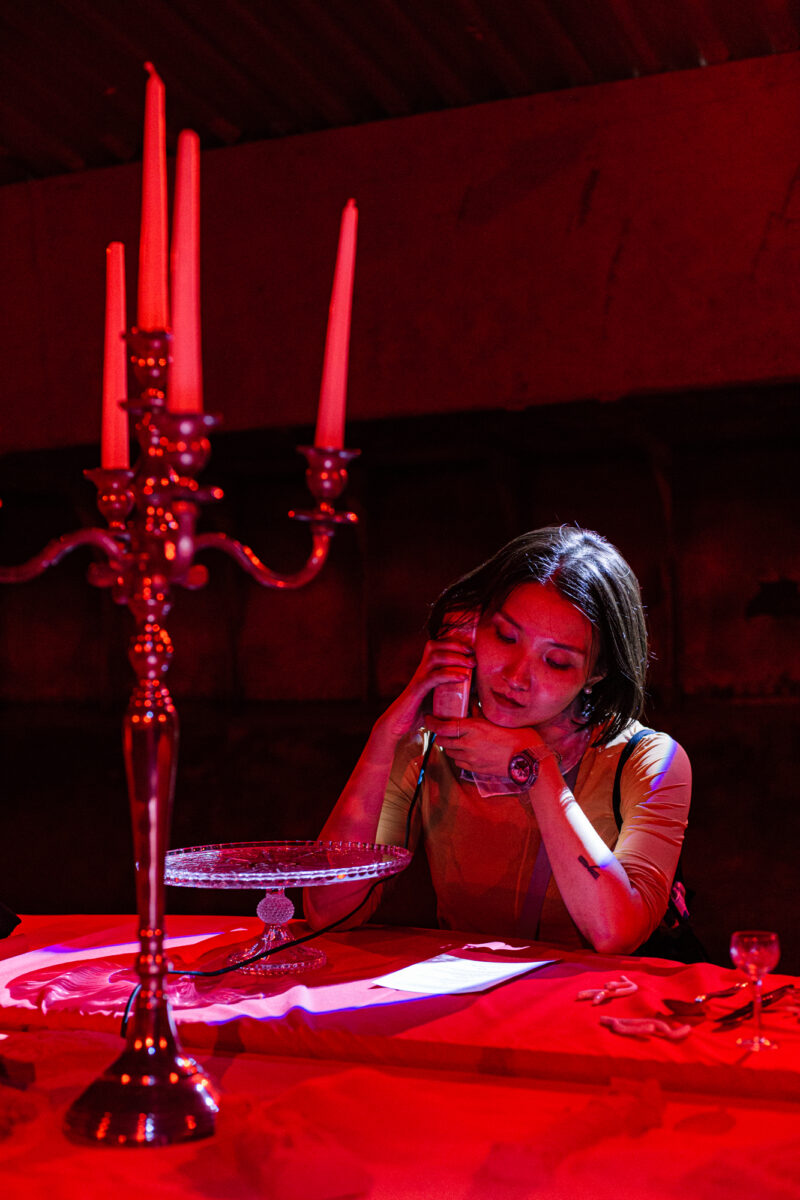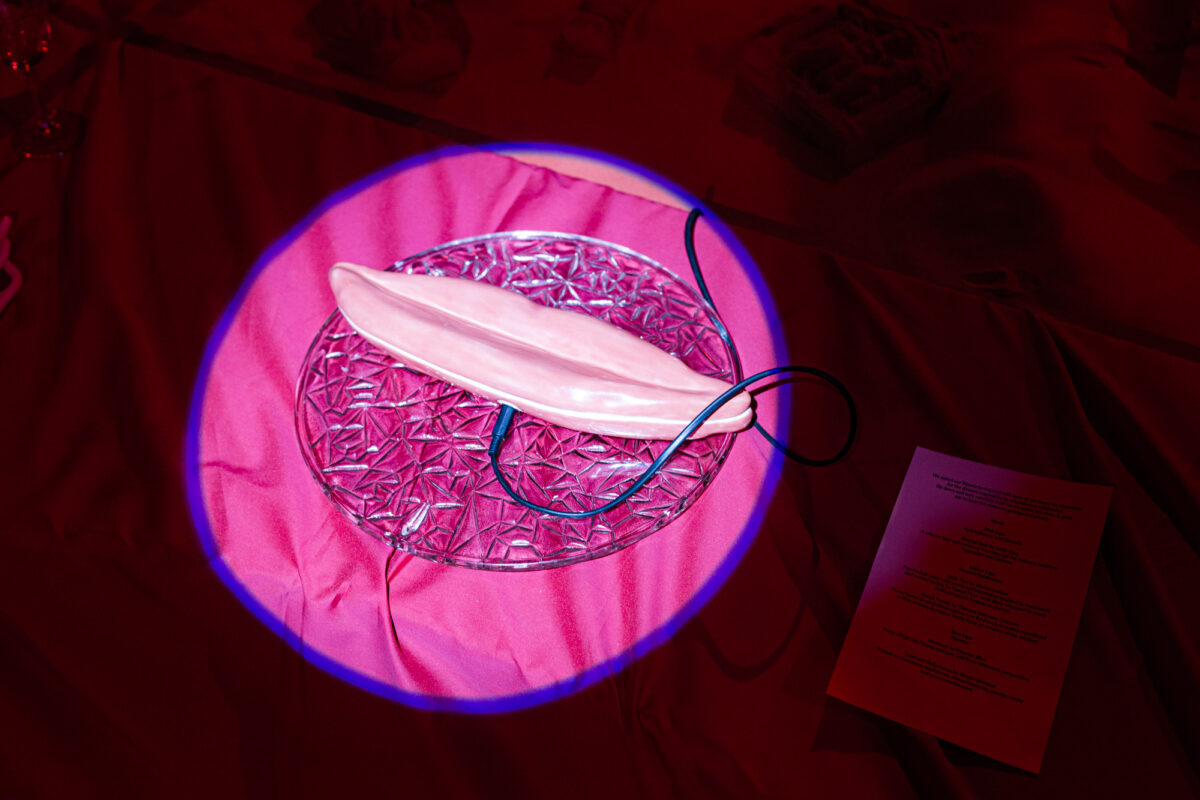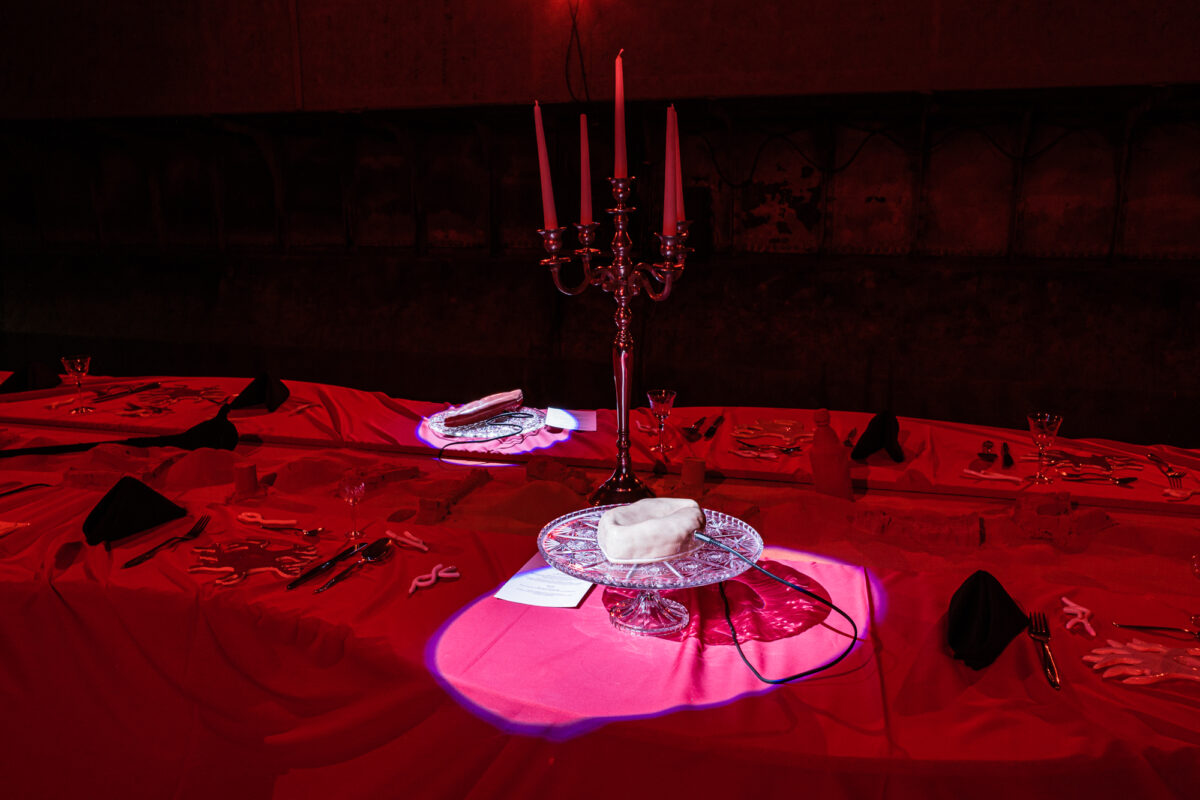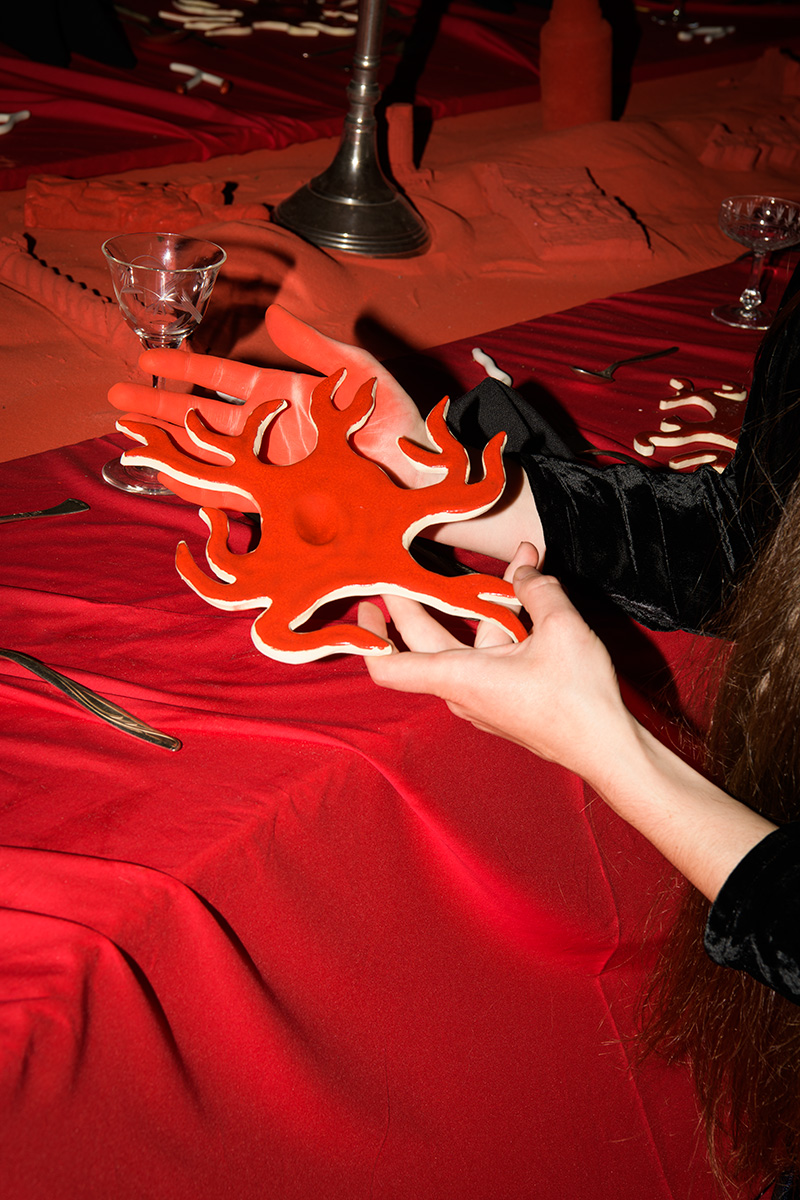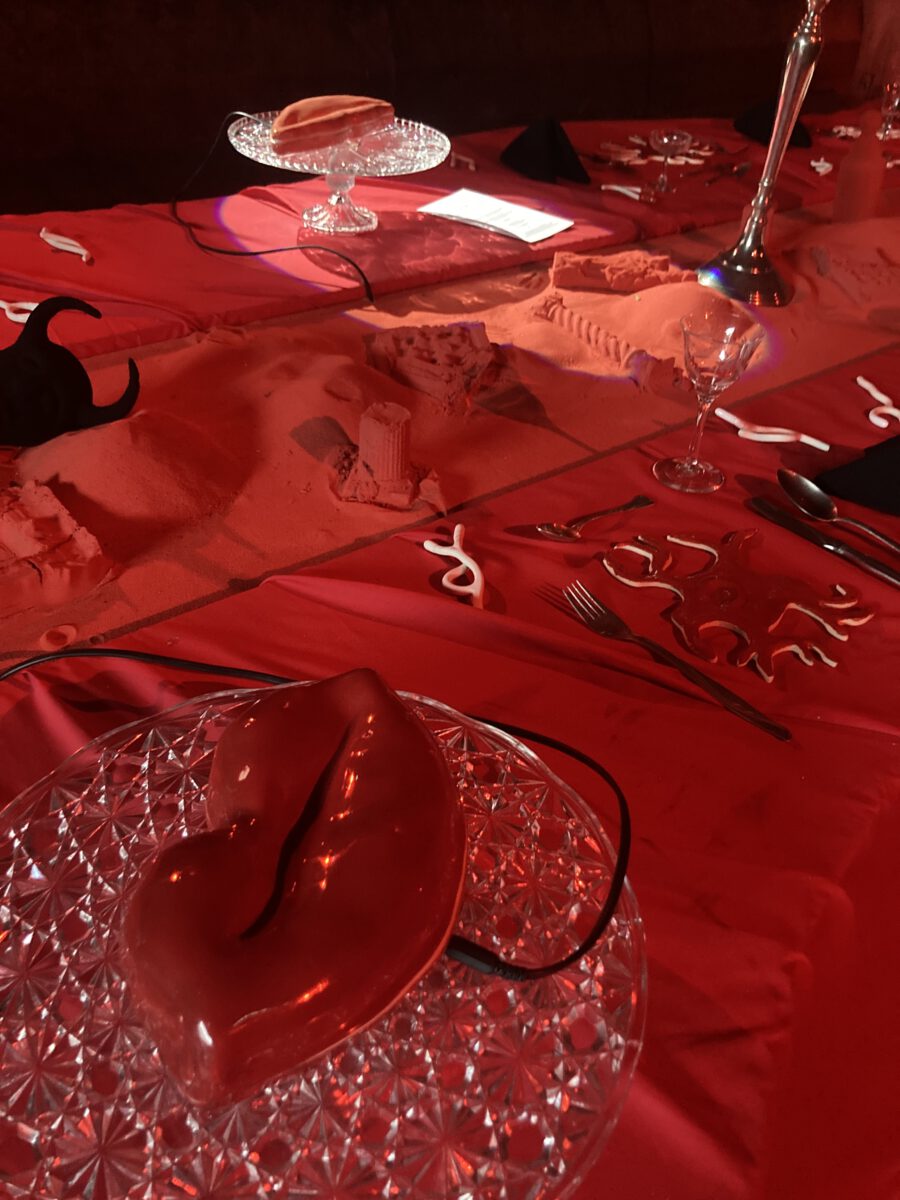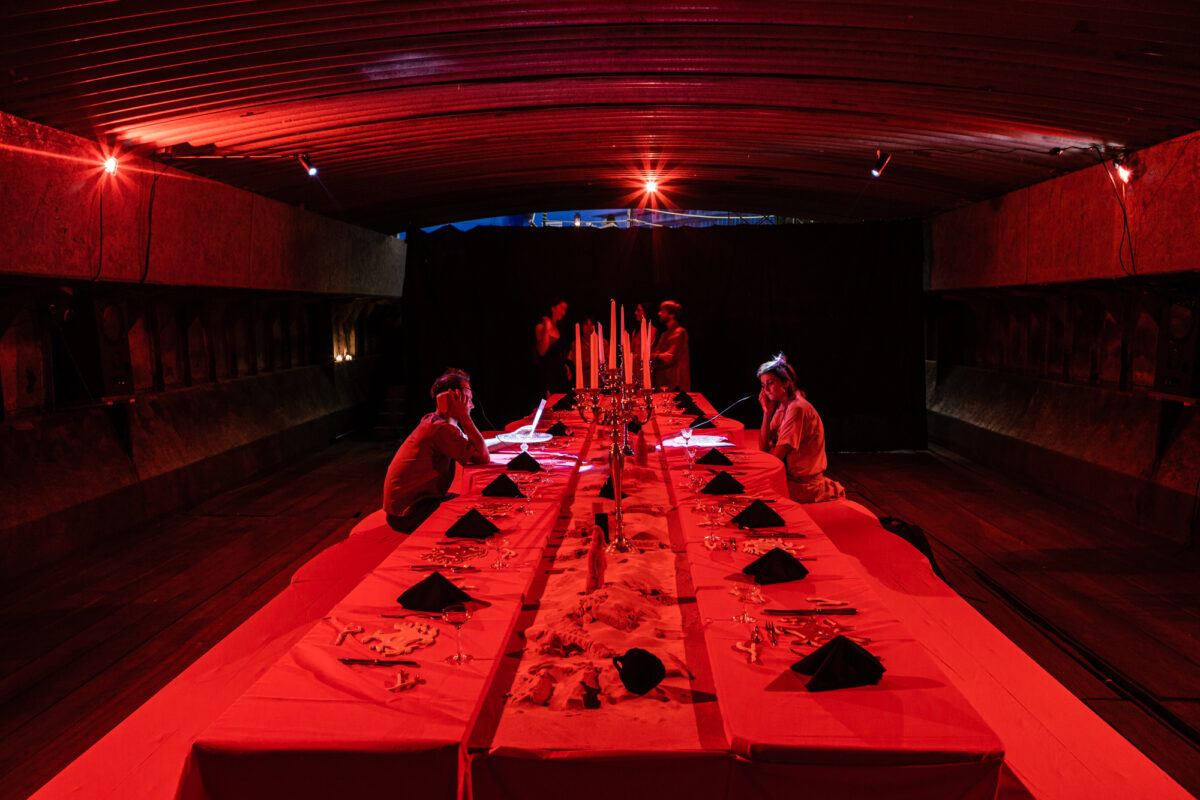
In a dimmed space, a lavish banquet is being prepared. Under soft red lights, miniatures of historical artefacts are presented next to neurone-shaped ceramic dishes and cutlery. Some of the objects are void-black, sucking in all the light, while others are of alluring silver. The banquet table is covered by piles of vermillion-red sand. Architectural elements representing power are slowly crumbling over the course of the exhibition. Glossy ceramic ‘Loose Lips’ placed on crystal platters are whispering the table gossip and rumours.
When power slips through one’s hand like sand, when greed for a colour drives one mad, when hunger for strength makes one eat poison – the spatial installation Substance of Power delves into these moments of extremes and allows to take a fleeting glimpse at these most curious struggles of control and domination.
Substance of Power is Gosia Lehmann’s and Valerian Blos’ ongoing research, examining the relationship between chemical substances and different forms of power. The starting point of the work is the story of ancient Chinese emperors who swallowed quicksilver in a bid to become immortal. However, instead of reaching eternal life they fell into paranoid-depressive states caused by mercury poisoning, contributing to fatally bad decisions that influenced the fate of the whole empire. Gosia Lehmann and Valerian Blos look into the history of substances, which were often reserved for privileged ruling classes, but eventually turned out to be corrupting for the mind – whether it’s lead used as a sweetener by the aristocrats of Ancient Rome or in make-up by the French bourgeoisie, or rumours of Putin’s acts of roid rage under the influence of anabolic steroids. Decisions about a food’s availability, religious diets and what makes something an expensive delicacy are rarely up to ordinary people. Food was always a vehicle of power. When an exclusive food suddenly becomes its consumer’s end, what then?
